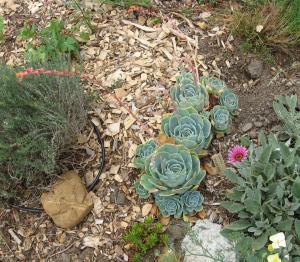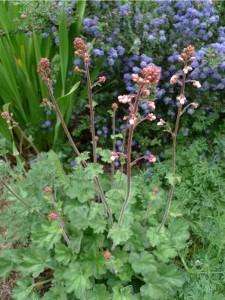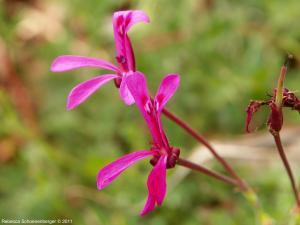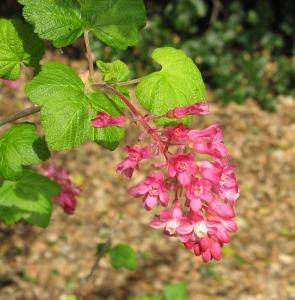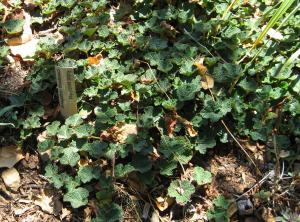Water Wise Plants
Here's a full list of all our water wise plants. You can also view an image gallery, or view the plants by categories.
Artemisia douglasiana
Pronunciation
art-ee-MIS-ee-uh dug-las-ee-AH-nuh
Common Name
Douglas' Sagewort
Plant Type
Perennial
Mature Size
4 ft (1.2 m) wide x 8 ft (2.4 m) tall
Water Requirements
Moderate: water weekly until the root ball is wet
Sun/Shade Requirements
Half sun to shade
Wildlife
Flower Color
Cream, White, Yellow
Where to See
Maintenance- Design- Planting Tips
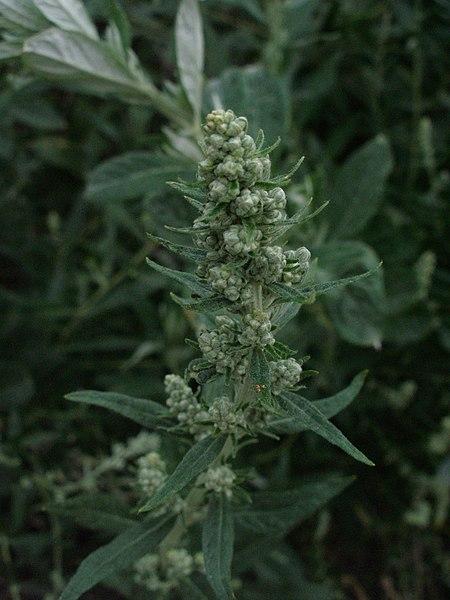
|
Echeveria sp.
Pronunciation
ech-eh-ver-EE-a
Common Name
Plant Type
Succulent
Mature Size
Less that 1 ft. tall and wide
Water Requirements
Low: water every three weeks until the root ball is wet
Sun/Shade Requirements
Half sun to shade
Wildlife
Flower Color
Pink, red with yellow tips
Where to See
Maintenance- Design- Planting Tips
Echeveria is a good filler or edging plant for the summer-dry flower border and also does well in pots. The sculptural quality of the fleshy leaves provides a nice contrast to the more delicate leaves of many perennials.
Echeverias are sometimes called ‘Hen and Chicks’, but so are Sempervivums, another succulent. It's one of the problems with using common names. In this case, it is better to use the botanical name, Echeveria. PADG Notes: Echeveria ‘Imbricata’, a UC Davis Arboretum All-Star, is featured in the Demonstration Garden. Some Echeverias do well in full sun, but Imbricata seems to do better in half shade and with a drip very close to the roots. |
Heuchera ‘Rosada’
Pronunciation
HEW-ker-ah
Common Name
Coral Bells ‘Rosada’
Plant Type
Perennial
Mature Size
3 ft. to 4 ft. wide with 1 ft. flower stalks
Water Requirements
Moderate: water weekly until the root ball is wet
Sun/Shade Requirements
Half sun to shade
Wildlife
Flower Color
Pink
Where to See
Maintenance- Design- Planting Tips
There are many kinds of Heuchera, but Heuchera ‘Rosada’ is a favorite. Introduced to the nursery trade by the UC Davis Arboretum, it is a cross between two different western U.S. native species.
Heuchera ‘Rosada’ prefers light shade and occasional to moderate water. With beautiful rosettes of low growing foliage and stalks of pink blooms, it is a favorite of woodland gardens. Removing the flower stalks when the plant finishes blooming is all the maintenance needed. Although these plants will grow in full sun, they will need more water to look their best. Plants grown in the shade can tolerate less water. UC Davis Arboretum selected Heuchera ‘Rosada’ for its Arboretum All-Stars designation, which identifies plants that are easy to grow, reliable, do not need a lot of water, and have few pest or disease problems. |
Pelargonium ionidiflorum
Pronunciation
pe-lar-GO-nee-um eye-oh-nid-ih-FLOR-um
Common Name
Celery Scented Pelargonium
Plant Type
Groundcover
Mature Size
12 - 18 in. high and 15 -24 in. wide
Water Requirements
Low: water every three weeks until the root ball is wet
Sun/Shade Requirements
Half sun to shade
Wildlife
Flower Color
Magenta pink
Where to See
Maintenance- Design- Planting Tips
Pelargonium ionidiflorum blooms throughout the year with bright pink flowers. Attractive when grown in front of border plants, it stays low and compact and seems to do well in partial shade. Unlike other Pelargoniums, this plant does not get leggy. Maintenance is minimal, and occasional deadheading is all that is needed.
|
Ribes sanguineum
Pronunciation
RY-beez san-GWIN-ee-um
Common Name
Pink Flowering Currant
Plant Type
Shrub
Mature Size
5 ft. to 12 ft. tall and wide
Water Requirements
Low: water every three weeks until the root ball is wet
Sun/Shade Requirements
Half sun to shade
Wildlife
Flower Color
Pink, red, yellow, white
Where to See
Maintenance- Design- Planting Tips
Ribes sanguineum is a useful landscape plant because it is one of the few shrubs that shine in dry shade. Pink Flowering Currant is one of the first plants to awaken in the spring with a beautiful display of pendulous pink flowers and green maple-like lobed leaves. Ribes, a deciduous shrub, loses all its leaves in the late fall.
This plant can be used as a focal plant in the garden surrounded by smaller perennials or as an understory plant when combined with large trees with low water usage, like California Oaks. It can get by with very little water but looks fuller when a moderate amount of water is applied in the summer. When using Ribes under a California Oak, avoid summer water. There are many different cultivars of Ribes available with flowers ranging from red to pink to yellow to white. Some types of Ribes work well in full sun. Hummingbirds are attracted to the flowers, especially since they bloom when not much else is flowering. In the fall the shrub has blue-black berries that attract fruit-eating birds including mockingbirds and cedar waxwings. Ribes sanguineum is found along the Pacific coast from California to British Columbia, Canada. |
Rubus parviflorus
Pronunciation
ROO-bus par-VEE-floh-roos
Common Name
Thimbleberry
Plant Type
Shrub
Mature Size
4 - 8.2 ft. (1.2 - 2.5 m) tall
Water Requirements
Moderate: water weekly until the root ball is wet
Sun/Shade Requirements
Half sun to shade
Wildlife
Flower Color
White, Yellow
Where to See
Maintenance- Design- Planting Tips
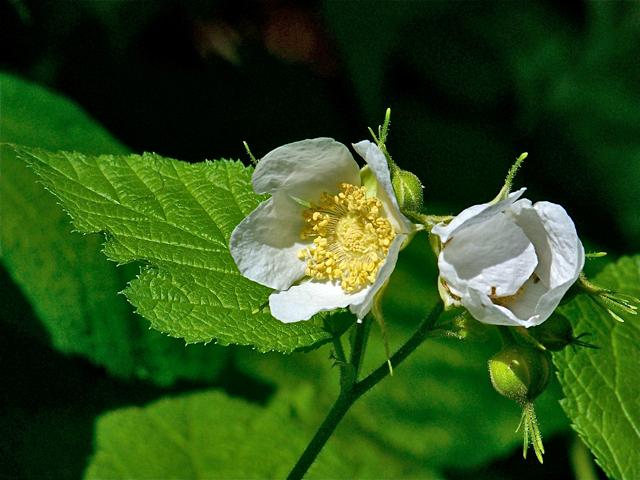
|
Rubus pentalobus
Pronunciation
ROO-bus pen-tuh-LOH-bus
Common Name
Creeping Raspberry
Plant Type
Groundcover
Mature Size
6 ft. wide and 6 in. to 12 in. tall
Water Requirements
Low: water every three weeks until the root ball is wet
Sun/Shade Requirements
Half sun to shade
Wildlife
Flower Color
Small white flowers
Where to See
Maintenance- Design- Planting Tips
|







